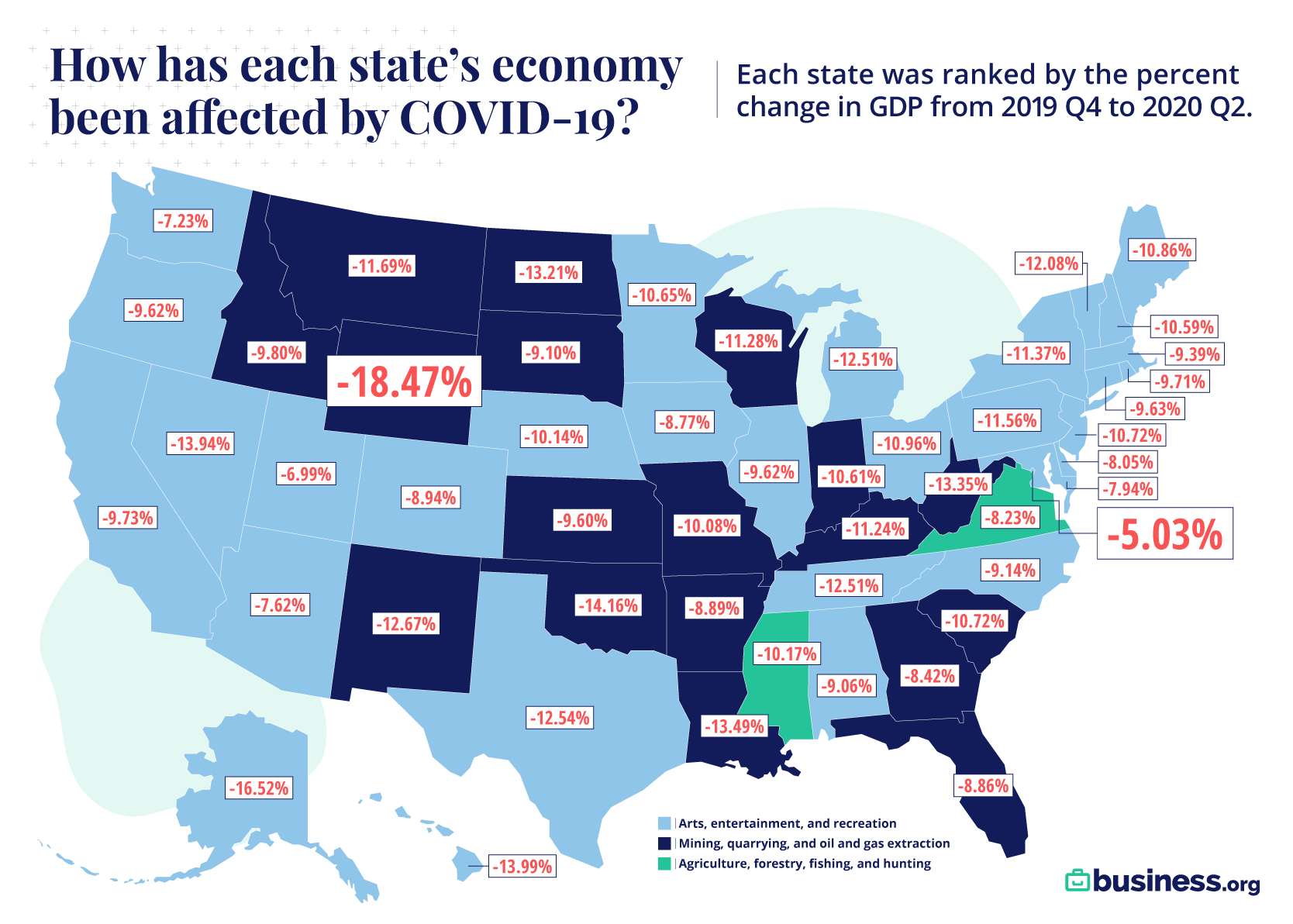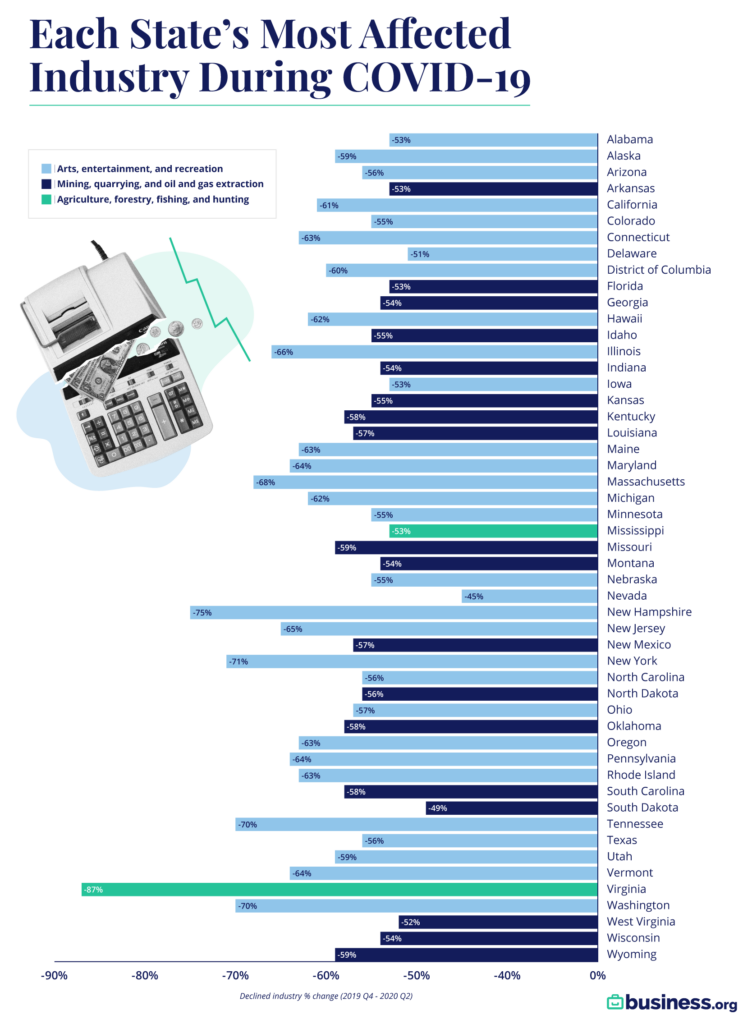We are committed to sharing unbiased reviews. Some of the links on our site are from our partners who compensate us. Read our editorial guidelines and advertising disclosure.
COVID-19 Economic Impact: A State-by-State Analysis

Business and industry have been in flux since the rolling out of nationwide pandemic safety constraints in March. While some lucky players like Zoom and Amazon have profited from stay-at-home mandates, many businesses have seen serious downturns.
In every state, the net effect has been a decrease in gross domestic product (GDP). But some states have been hit harder than others. Now that we have numbers from the second quarter (Q2) of 2020,¹ we can start to more fully assess the economic impact of COVID-19 on individual states and industries as compared to fourth quarter (Q4) numbers from 2019.
Interesting Findings
- Arts, entertainment, and recreation were the most affected industries nationwide. A whopping 31 states reported serious declines in these industries, with New Hampshire, New York, and Washington topping the list.
- Mining also took a significant blow—18 states listed it as their most impacted industry.
- Wyoming and Alaska took the biggest GDP hit from COVID-19, dropping 18.5% and 16.5%, respectively.
- The District of Columbia and Utah experienced the smallest GDP change, dropping only 5% and 7%, respectively.
So just how bad are the losses in some of the states? In New Hampshire, arts, entertainment, and recreation GDP fell by 75.3%. New York declined in the same industries by 70.7%, and Washington declined by 70.1%. These losses are to be expected as live entertainment is severely halted in times of social distancing and work from home.
Significant downturns in mining, however, are a little more surprising. A staggering 17 of 18 states that listed mining as their most affected industry saw declines greater than 50%, with Missouri (-58.5%) and Wyoming (-58.5%) being hit the hardest.
It’s surprising how wide the gap is between the most affected state GDP (Wyoming at 18.5%) and the least affected state GDP (Utah at 7%). This gap brings up important questions. Were certain states better prepared to weather the pandemic? What did local governments and businesses do to mitigate GDP losses? What can governments and individuals learn from these less affected states?
By signing up I agree to the Terms of Use and Privacy Policy.

The takeaway
Looking to the future, it will be crucial to examine why certain states did better than others. These studies could provide insights into preventing further economic decline and may help us learn how to safeguard against future disruptive economic events.
For now, our country and the world waits for news of a vaccine. But until that vaccine comes, we must do what we can to keep our country safe and our economy stable.
Methodology
Each state and region was ranked by the percent change in GDP from 2019 Q4 to 2020 Q2.
Sources:
- Bureau of Economic Analysis, “GDP by State.” Accessed November 19, 2020.




